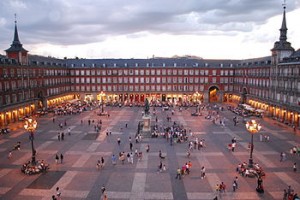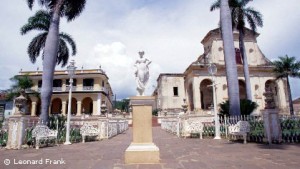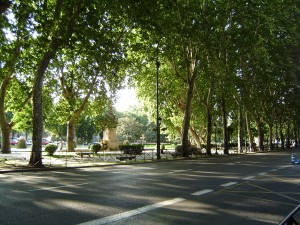Spain and Cuba
May 4, 2012 by admin
Aside from the obvious superficial connection between languages, Cuba’s rich historical relationship with Spain has impacted the country in many ways. After Columbus discovered the island in 1492, the Spanish consequently founded cities and eradicated the local Taíno population. These cities, such as Havana and Trinidad, are reflections of Spanish character and their architectural fabric of the cities expound the relationship between Spain and Cuba prior to Cuba’s independence in 1898. They detail that the connection between the two countries was profound, and although independence was achieved, Spain’s influence is still far-reaching in the island.
There are many striking similarities between Spanish architecture in Spain and the layout of the cities in Cuba, specifically Trinidad and Habana Vieja. The first similarity that comes to mind is the presence of plazas in all of the cities. Specifically in Habana Vieja, as opposed to most of the rest of the city that was largely built after 1898, plazas are very visible parts of the architectural fabric. Much like the plazas in Spain, these plazas function as meeting areas for locals and places where restaurants and other commerce thrives. Even some of the names of the plazas are similar. For example, in Trinidad, Plaza Mayor serves as the central plaza and marks the middle of the city, much like the Plaza Mayor in Madrid serves as the center of the city as well. At the same time plazas punctuate Habana Vieja and Trinidad much the same way they punctuate cities in Spain. In much the same way they punctuate Spanish plazas, they are often the sites of famous cathedrals as well: Plaza Catedral in Havana was home to the Catedral de la Habana.
However, plazas are not the only architectural similarities. Perhaps the most striking example of Spain’s architectural influence is the Paseo del Prado in Havana; it was inspired for the same reason the Paseo del Prado in Madrid was constructed. Both Paseos del Prado are along major arterial roads of the city and highlight sites of historical importance along the roads. It was not surprising to see Cuban sites that were similar to Spanish sites; however, the degree to which the city was modeled after Spain in such detail was surprising. The architecture serves as a viewable, palpable connection between the two nations that, although weakened by the independence struggle, still persists fairly strongly today.
Much like the conquistadors of the old colonial empire walked through Cuban cities (walking through the same place in Trinidad where Hernán Cortés once walked before his Aztec conquest was pretty remarkable) in search of riches in a new land, Spain now invests heavily in its former colony in search of different riches. The difference is this time Cuba is free and capable of negotiating itself favorable conditions. Spain had a long, illustrious relationship with Cuba while it was a colony, and although the independence struggle severed that relationship for a while it is now still quite strong. The bond has always been there, you simply have to look at the architecture.
Leave a Reply
You must be logged in to post a comment.



